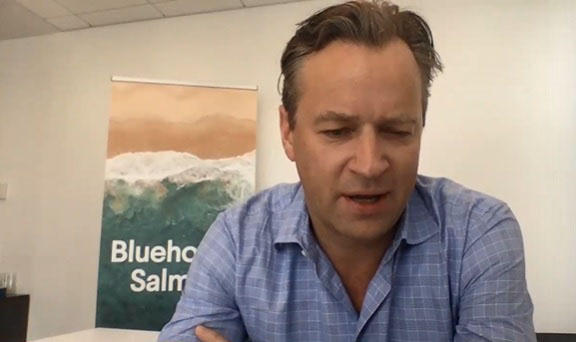Atlantic Sapphire co-founder Johan Andreassen says the economics of land-based salmon farming no longer stack up in today’s climate of high costs and interest rates.
Atlantic Sapphire founder Johan Andreassen has warned that the current global climate of rising capital costs and interest rates makes land-based salmon farming in the United States economically unviable — even as new US tariffs on imported salmon renew pressure for domestic production.
In a detailed post on LinkedIn, Andreassen argued that the recently announced US tariffs — 10% on salmon from Chile, 15% on Norway, and 20% on EU-origin salmon — will likely do little to stimulate local production or dramatically raise consumer prices. Instead, he predicted the cost burden will fall largely on farmers.
“A 10% tariff at the import level doesn’t mean prices go up 10% on a restaurant menu,” Andreassen said. “If a salmon dish sells for $25 and the raw salmon portion costs $3.50, a 10% increase on the fish only adds 35 cents. Even if the restaurant adjusts to maintain its food cost ratio, the menu price only needs to go up by about 5%. In many cases, it won’t go up at all.”
He noted a similar pattern in retail, where a 10% increase at the wholesale level might result in just a 5–8% increase on shelves.
“The end consumer may not take the hit. A lot of the cost may end up falling on the farmers — who, historically, have enjoyed high profit margins and are still likely to make money even with tariffs in place.”
Cost makes land-based a stretch
Andreassen — whose company pioneered land-based salmon farming in Florida — added that even if demand for local product grows, the economics no longer work in today’s climate.
“Today it costs around $40/kg of capacity to build. Replacing US imports would require $26 billion in investment, and at today’s return expectations (around 12%), that would mean needing $4.80/kg in net profit — which is 3–5x what most producers earn today,” he said. “Even at half the CAPEX, it’s still a stretch.”
He also noted that even if the funding existed, it could take a decade or more to develop enough infrastructure to replace import volumes.
A globally adaptive industry
Despite market uncertainty, Andreassen expressed confidence in the global salmon industry’s ability to adapt to trade barriers.
“The salmon industry has proven again and again how agile and globally connected it is. When tariffs hit, trade flows shift,” he said. “Countries with lower tariffs sell more to the U.S., while producers facing higher tariffs redirect their volumes to other markets.”
But he warned of risks to pricing if too much product is diverted out of the US.
“Global salmon production is too large not to sell a significant share into the U.S. market. If too much fish gets diverted elsewhere, prices will collapse in those markets. So the U.S. will remain a key outlet — even if some origins temporarily shift.”
While he believes the current tariff announcements may not become long-term policy, Andreassen concluded that “if not, the industry will adjust — just like it always has.”


